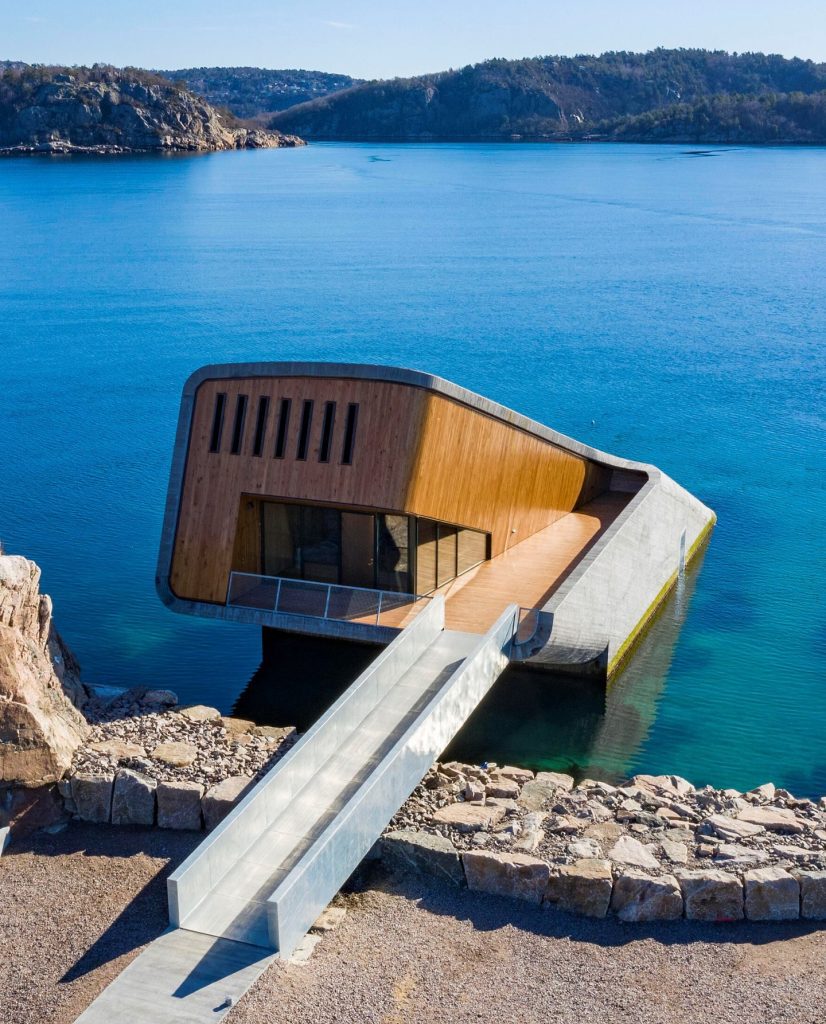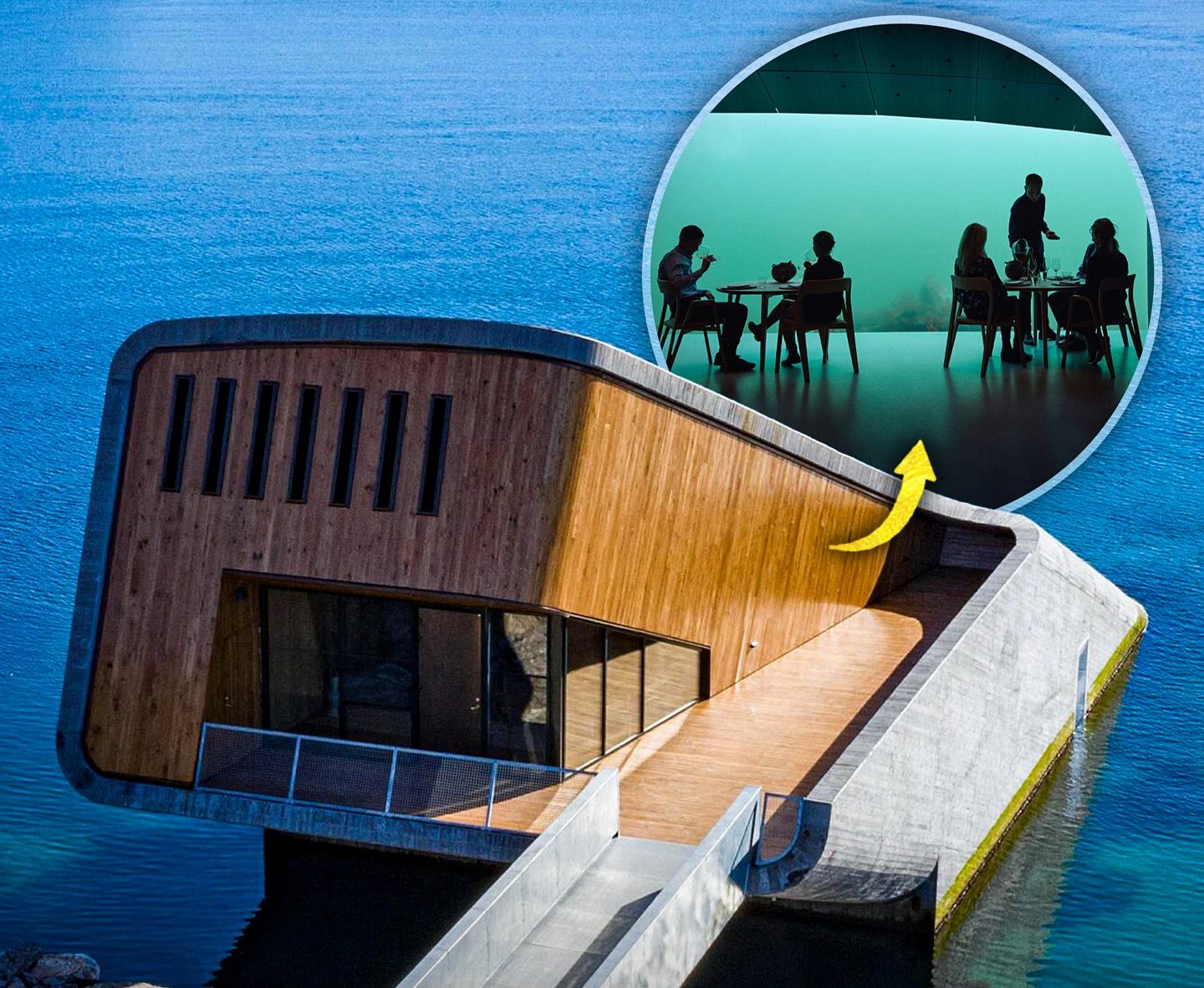Inside “Under,” Norway’s Mind-Bending Underwater Restaurant Where You Eat Face-to-Fin With the North Sea
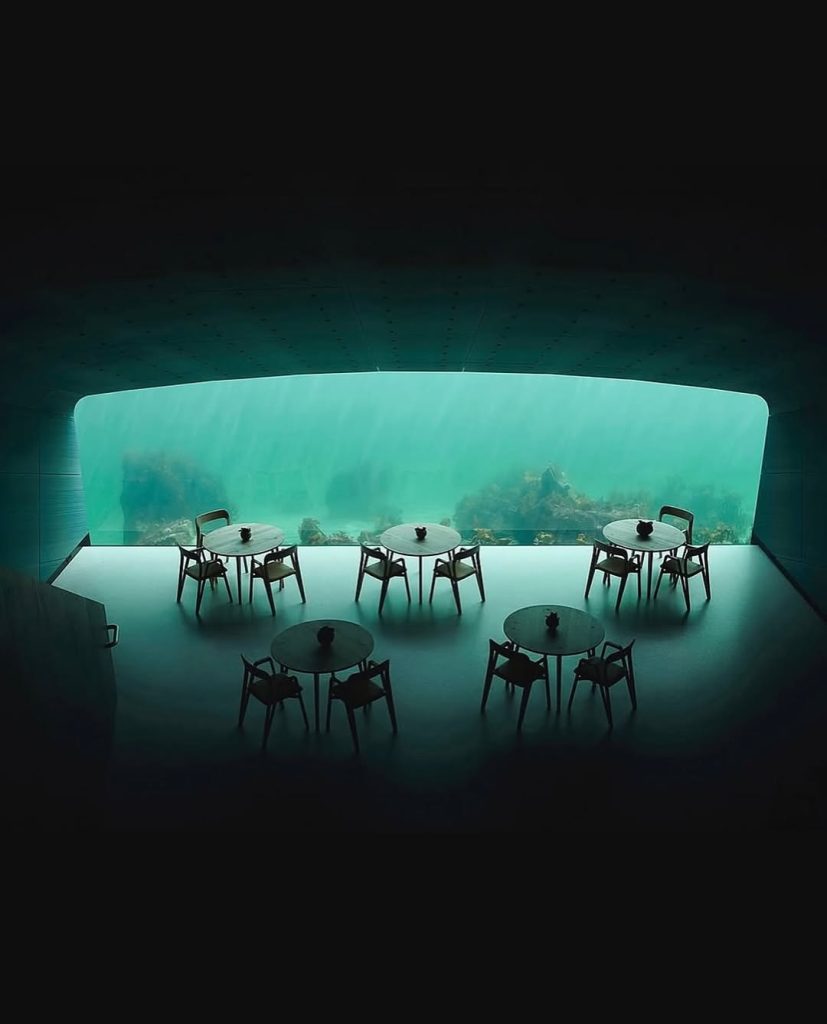
The first thing you notice is the hush. One moment you’re standing on the craggy shore of Lindesnes, wind whipping off the North Sea, gulls crying overhead, and the next you’re slipping through a thick oak door into a tunnel of muted light. The entrance feels more like the foyer of a modern art museum than a restaurant. Pale wood curves around you in gentle waves, guiding you downward as the scent of salt and seaweed mingles with a whiff of warm sourdough drifting up from the kitchen below. Each step deeper carries a subtle pressure in your ears—your body’s quiet reminder that you’re walking not just into a building but beneath an ocean.
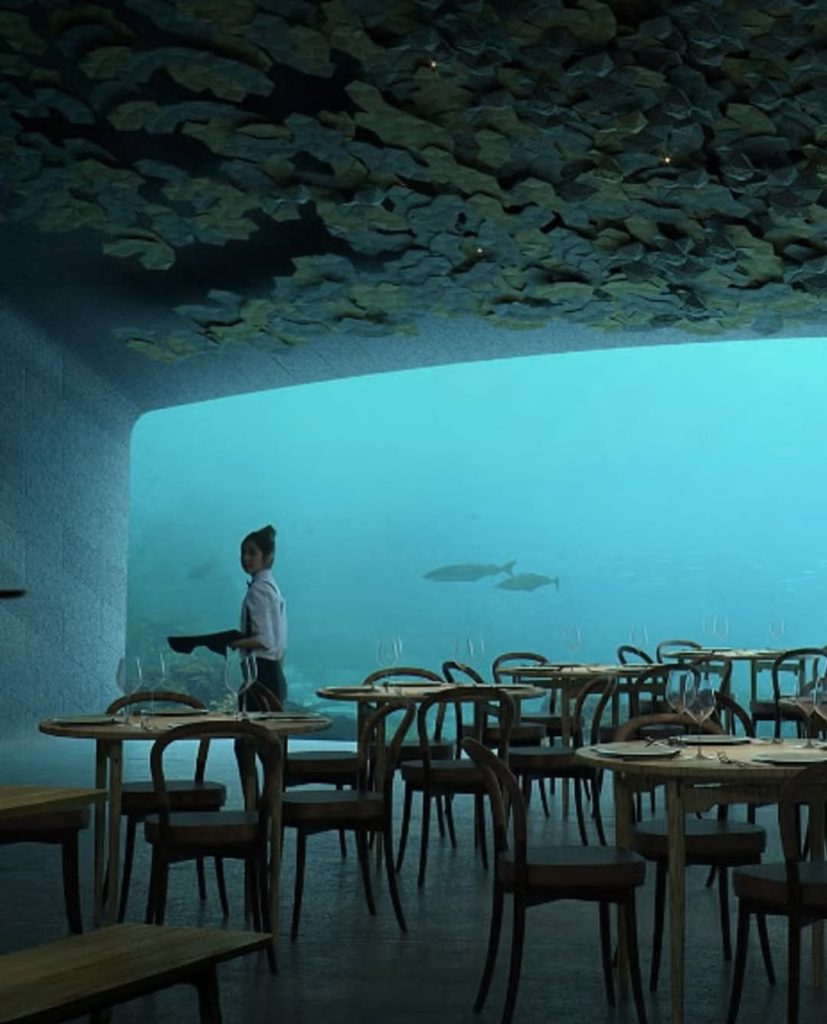
At the bottom, five meters under the surface, the tunnel widens into a dining hall washed in aquamarine. A single, panoramic window—eleven meters wide and as tall as a two-story house—stretches across the far wall. It is less a window than a stage, and the North Sea performs. Schools of pollock ripple like living silver, kelp fronds sway in slow motion, and once in a while a curious cod noses the glass as though checking on the humans who have come to eat where fish normally reign. You feel small, but in the most wonderful way—like a traveler standing beneath cathedral vaults, except this cathedral is alive and breathing all around you.
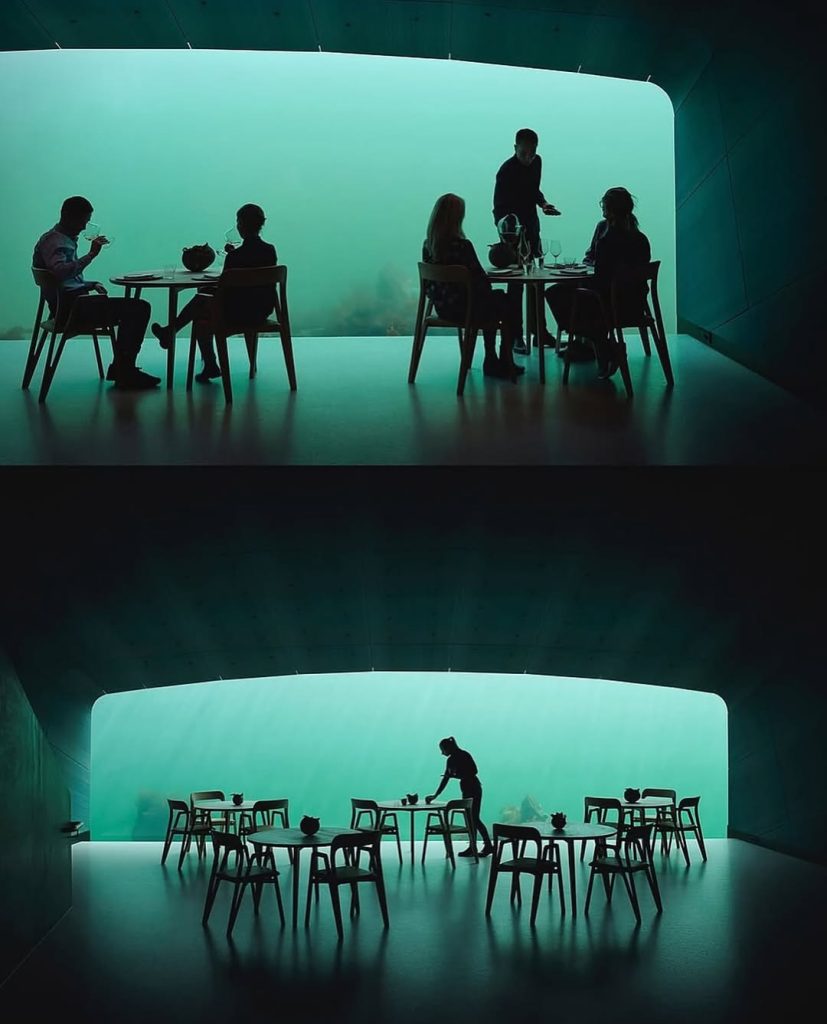
The restaurant is called Under, which in Norwegian means both “below” and “wonder,” and the double meaning feels earned. Designed by the renowned Oslo firm Snøhetta, the structure looks from the outside like a concrete monolith half-sunk into the sea after some friendly giant tipped it off a pier. In truth, it weighs about sixteen hundred tons and was slid into place in 2018, then bolted to the rocky seabed. The walls are half a meter thick, intentionally rough so marine life can grip the surface and turn the shell into an artificial reef. In just a few years mussels have already colonized the concrete, filtering the water so it grows clearer season by season, enhancing the view for diners and fish alike.
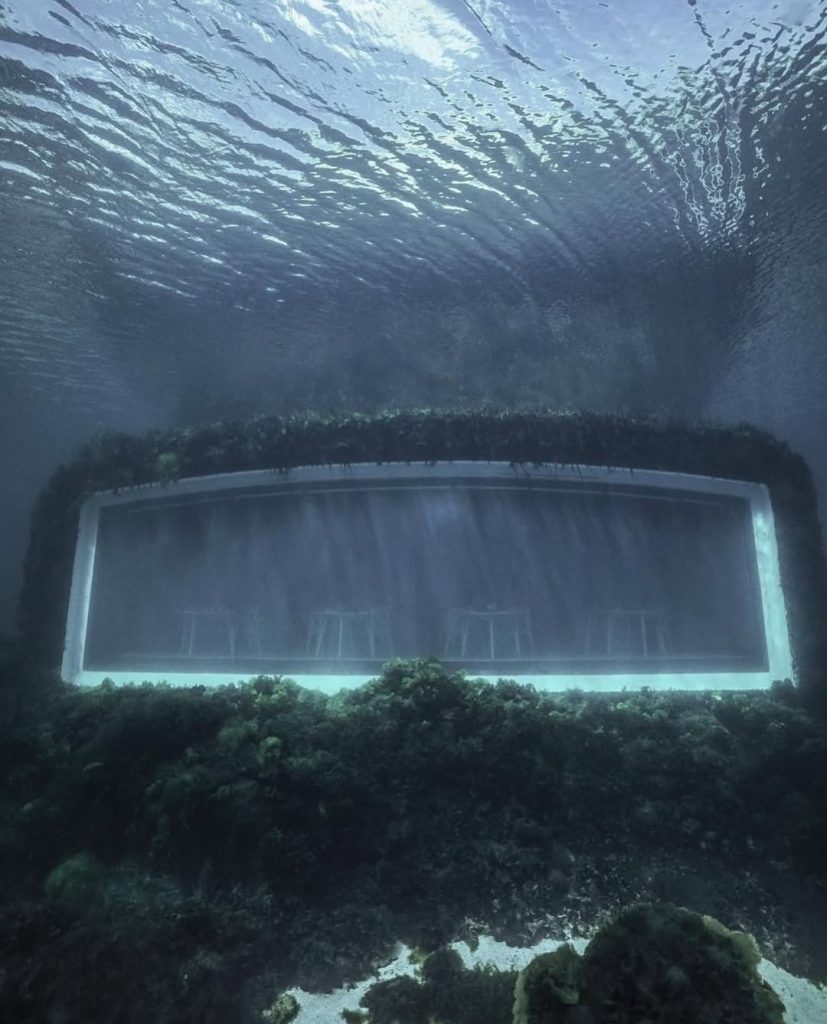
Inside, the effect is at once cozy and otherworldly. Only forty guests sit each night, spread across blond-wood tables that hold nothing but a single candle until the first plates arrive. No need for white tablecloths or chandeliers; the ocean supplies all the theater you could want. The lighting is soft and discreet, designed so the room doesn’t reflect on the acrylic window. After a minute you forget the barrier altogether. You are simply part of the sea, sharing its twilight.
What It Takes to Dine Beneath the Sea
Of course, you came here to eat, and under Chef Nicolai Ellitsgaard every course doubles as both fine dining and quiet manifesto. Ellitsgaard grew up near Denmark’s rugged west coast, and his cooking has always emphasized taking what the landscape offers without waste. At Under he pushes that philosophy to exhilarating extremes. The tasting menu—currently around NOK 2 650, roughly 280 U.S. dollars—changes with the tides, quite literally. He and his team free-dive for sea lettuce, sugar kelp, bladder wrack. They collect mahogany clams that can be older than some grandfathers and treat them with reverence, shaving translucent slices over warm bone broth spiked with beach herbs. One night you might taste smoked wolffish cheek glazed in fermented scallop, the next a tiny tart of juniper-cured langoustine topped with pickled spruce tips.
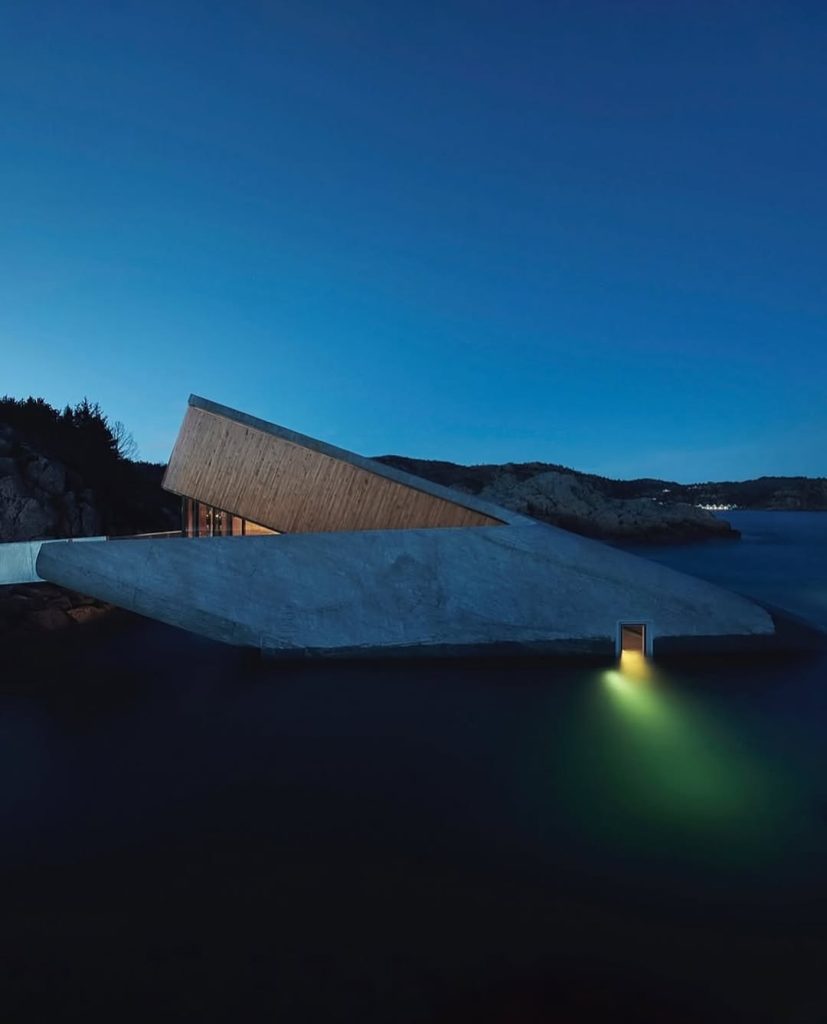
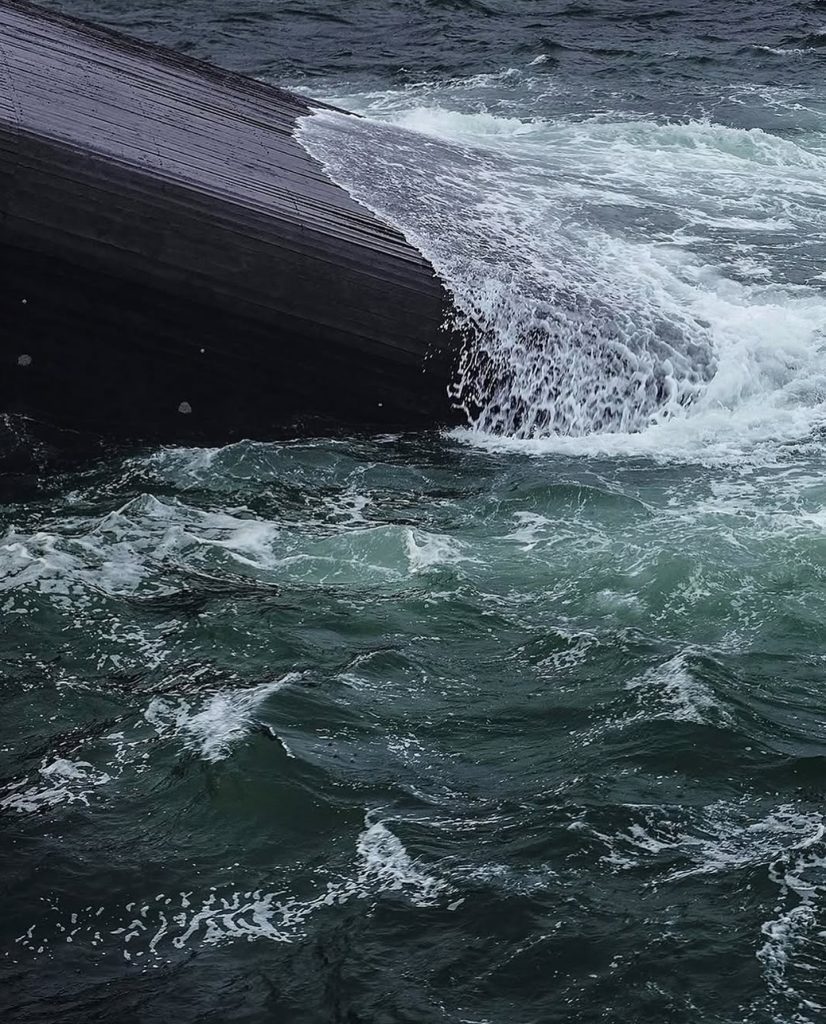
Between courses, servers appear carrying stoneware shaped like pebbles, or driftwood planks strewn with razor clams that seem to have crawled straight from the surf. The staff talk about each ingredient the way winemakers discuss terroir, but without pretense. They have a pilgrim’s pride; many helped forage or fish that very morning. Under earned a Michelin star in 2020, yet the vibe is unforced, even playful. There is no music—just the murmur of conversations in Norwegian, English, German, and the ever-present hush of water pressing against glass.
Ellitsgaard’s kitchen is powered partly by the same currents that swirl outside the window. Heat pumps draw stable temperatures from seawater, lowering energy use, while surplus food waste is composted and returned to local farms. The restaurant tracks everything, sharing data with marine biologists who use the building as a field station during daylight hours. Cameras mounted on the seabed study fish populations; sensors measure salinity, oxygen, and plankton bloom. Diners, wreathed in candlelight, rarely notice the quiet science unfolding above their heads, but they feel its result: a meal rooted in place, impossible to replicate on land.
Reservations open months in advance and vanish almost as fast as Arctic char in spawning season. Guests fly from New York, São Paulo, Tokyo, all to sit for three hours beneath the waves of a remote Norwegian bay. They arrive curious, perhaps skeptical, but they leave with salt on their lips and something like awe lodged in the heart. Under is not just eating out; it is a pilgrimage to a boundary—between human and ocean, between comfort and the unknown.
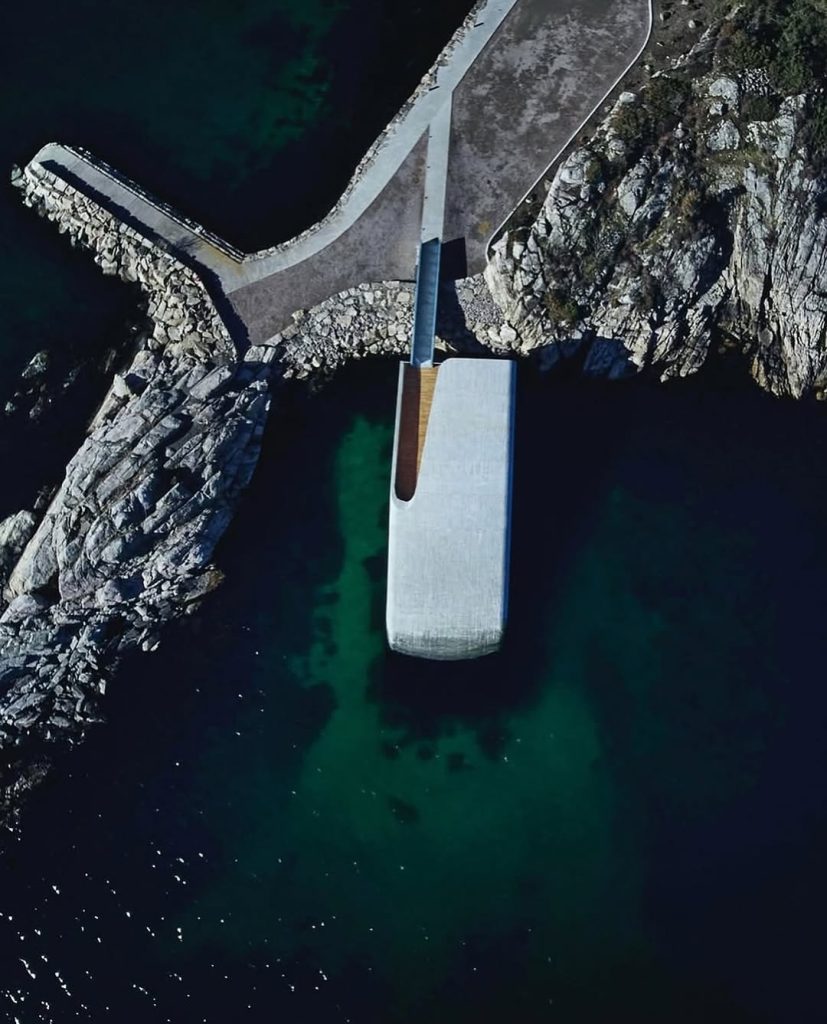
A Window to Tomorrow
In the years since Under opened on a chilly March evening in 2019, copycats have been announced from Istanbul to Sydney. None, so far, match the raw North Sea setting or the building’s stark poetry, but the trend hints at a larger shift. We crave experiences that collapse distance: between us and our food, our environment, each other. We are hungry to feel the planet’s pulse again, and architecture, when it is brave, can place that pulse right at our table.
Yet Under remains uniquely Norwegian. Lindesnes is famous for violent storms that can toss 30-foot waves against the lighthouse a few kilometers away. Standing on the restaurant’s rooftop at dusk, you see that lighthouse blinking a warning into the fog and appreciate the defiance baked into this project: the audacity to serve porcelain and wine glasses in a place where fishermen once tied boats with double ropes. During heavy weather the window glows emerald, alive with crashing foam. It is safe, the engineers assure, but the frisson is real. You are reminded that nature allows marvels like Under only on its own terms.
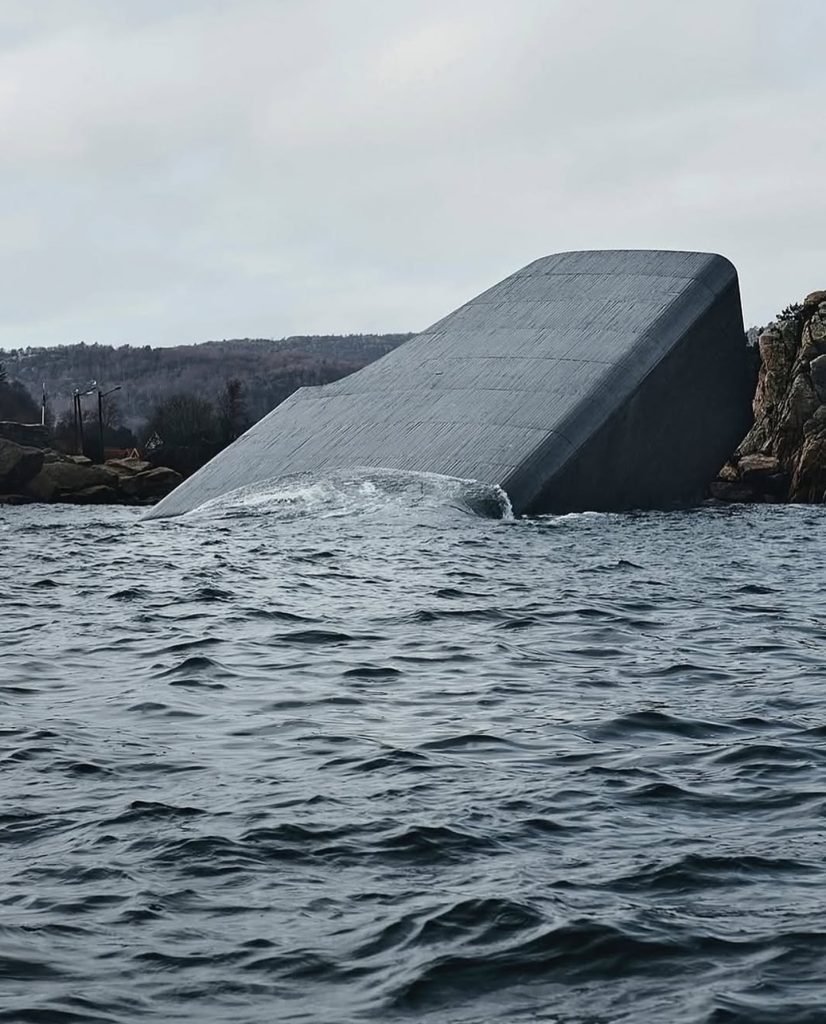
Still, on calm summer nights, seals glide past the glass, chasing herring in the blue half-dark. Candle flames sway, mirroring distant kelp, and conversations slow to hushed smiles. Dessert appears, maybe spruce-tip ice cream drizzled with salted yakon syrup, and someone raises a toast to the sea. Outside, the North Sea accepts the compliment with a ripple, then resumes its timeless business.
When the bill arrives it is steep, certainly, but you pay knowing the memory will outlast most things money buys. You climb the tunnel back to fresh air, blink at the sudden daylight, and hear the gulls again. The restaurant recedes to a quiet sculptural form, half building, half boulder, poised forever between shore and fathom. You realize that for three hours you lived inside a dream humans have shared since the first myths—dining with the deep. And as you drive up the winding coastal road toward Oslo, salty crumbs on your fingertips and the taste of cold sea lingering, you are certain of one truth: sometimes we have to go underwater to surface with a new view of the world.
